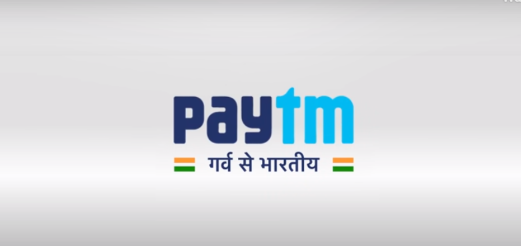Why Design Thinking eludes Indians!
Over 100 corporate workshops down, and an additional dozen on Design Thinking, I am increasingly realizing the limitations of corporate India. The lacune is getting even more evident with my recent series of engagements on Design Thinking, which has caught up very well, of late, in India. I can see a strong contrast between some of the tenets and practices of Design Thinking and why Indian managers, across levels, find it difficult to apply Design Thinking in their lives. This piece identifies a few sources of disconnect and some remedial actions.
But before I delve into the shortcomings, let’s spend some time understanding Design Thinking (DT). Tim Brown, the CEO of world’s foremost Design Thinking company- IDEO- defines DT as
“a human centered approach to innovation that draws from the designer’s toolkit to integrate the needs of people, the possibilities of technology, and the requirements of business success”.
While the concept of DT dates back to 1960s, the credit to the revival in corporate parlance goes to the founder of IDEO- David Kelley- who identifies the key tenets of DT as
“empathy for the people you’re trying to design for.”
Apart from IDEO, the Stanford d.School is equally instrumental in propagating the approach in academic and corporate circles alike. In fact, one of the widely adopted approaches to DT is from Stanford University, as depicted below.

Think of DT as a systematic approach to problem solving, which isn’t all that novel. However, more than the process of problem solving, the principles and ethos are important and novel.
One could identify the five tenets of DT as follows:
— Customer centricity
— Rapid iteration
— Visual thinking
— Collaborative
— Tactile
I contend that on each of the five tenets, Indian executives struggle, and hence, DT remains more of a conceptual tool than of much practical utility.
One of the most iconic and informative videos on DT is the one by ABC Nightline where the team at IDEO is given five days to redesign a shopping cart. It’s a must in most workshops on the subject, for it depicts the process, the team composition, and the outcome in just about eight minutes.
It is very evident from the video that the teams at IDEO, or any other DT firm for that matter, very intuitively follow the principles of being customer centric (being emphatic), iterating in quick succession (not settling for the first right answer), visual in their thinking (being verbal and visual about their ideas and thoughts), collaborative (across levels, domains, and mediums), and tactile (getting their hands dirty, quite literally so).
However, Indian cultural, coupled with the ways we run our organizations, doesn’t lend much support to practicing DT to its practical best.
For one, our office spaces depict a clear sense of hierarchy and an overt sense of order, the sure dampeners of a DT mindset. This is coupled with our rigid office architectures, which are thankfully getting disrupted of late, but largely remain as the proxy of ‘arrival’ in the corporate lives.
Apart from the more hard facts of Indian corporate, the devil is in the details — in our psyche. Here’s why:
Empathy doesn’t come easy
India is typified by scarcity, of almost everything. When a child, whether urban or rural, experiences scarcity through the growth years and then in getting college admissions, securing a job, and other hardship as an adult, the ‘me-first’ attitude is natural. And now, all of a sudden, this bloke is asked to empathise with an almost stranger. How likely is it to happen?
We can sympathize, if asked for, or else the posture remains of apathy, except is certain exceptional cases of natural or man-made disasters, such as those in Mumbai. But again, most people extending a helping hand hold no corporate titles!
The irony is that the ‘me-first’ attitude persists even when there is no such scarcity, and the average affluence levels have gone up.
It is wired, much like the fight or flight response triggered in human brain. To overcome this disposition, needs efforts, serious ones.
Desire to be right, the first-time
The acute sense of scarcity also means that one doesn’t get too many chances. A few shots at IIT-JEE, even fewer at the job market, and then as one moves up the corporate ladder the cost of every mistake only amplifies, often out of proportion. This makes the Indian executive always stick to the time tested, wanting to make it count the very first time, and not leaving much to the chance. The precise counterproductive practices to that of DT.
Remember, you can be right the first time only if you know what exactly needs to be done, and there’s hardly any discovery left.
The very ethos of innovation is discovery and in charting through the unknown, and you can’t get it right the first time itself. One needs to tolerate ambiguity, experiment continuously, and moreover, keep at it, in the face of failure.
Talking of failure — it’s a very personal thing in our country. Success is public, but failure is very personal. That needs to change.
Thankfully, with growing migration and changing social fabric, the cost of failure isn’t lethal anymore.
Overvaluing what we have
You remember how we were told to write our exams? Hiding the answer sheets, and the notes, before that. We were always told to be secretive about what we knew, even if, it may not have any real value. Sharing doesn’t come easy to Indians, even though we are one of the largest players in this ‘sharing economy’.
These behaviors transfer rather seamlessly from the classrooms to the boardrooms. Most executives thrive on information asymmetry. They like to conceal information, which is often worthless. We fail to write, and drawing, is a far cry.
We lack expressions of ideas, thoughts, and emotions, especially the good ones.
If the key to DT is in sharing with the team all of what you know, and getting to the root of the problem as soon as possible, and similarly getting to the best solution, this hoarding mentality of Indian executives is a huge limitation. We need to not only write more often, but also exercise the long lost art of drawing our thoughts.
We work together, if asked for
Autonomous collaboration doesn’t come naturally to Indian executives. We are good at taking orders, giving orders, and working, provided the task is well cut out. Division of labor helps us earmark efforts, and appropriate the rewards, but when it comes to collaboration in an ambiguous manner, we fail miserably.
Collaboration versus a buyer-seller relationship is different in the sense that former has uncertainties around it, whereas the latter is laid out cut and dry. There is no sense of discovery, and that freaks a lot of people out who are used to working in a much more predictable manner.
DT calls for extreme sense of collaboration — across levels, organizational boundaries, and domains, and amid no clear approach and outcome.
To be able to collaborate, embracing divergent views, tolerating dismissal, and looking at others’ perspective is required — all in limited supply amongst Indian executives.
Knowledge and skills are two compartments
Lastly, but perhaps the defining feature of why DT doesn’t work in Indian context, is that we treat knowledge and skills separately. IITs give you knowledge (allegedly), whereas ITIs give you skills. Yours truly, being an engineer, still resorts to a electrician on call to handle minor household fixes. I was once gifted with a Bosch drilling machine, and haven’t used it till date! That’s my state of skills.
It’s a fashion in India for an engineer fast graduate to becoming a manager, and never doing any real creation (read engineering). People want to be engineers to soon move our of engineering into managerial roles, where all they are managing (hopefully) are peoples’ emotions.
DT needs one to get physical with the ideas, to make prototypes, mockups, tactile setups, and getting some real feedback from the market. If you seek new ideas, you need to get involved, physically.
It all boils down to our inability to think under ambiguous situations, thinking of others first, with a strong need for order and hierarchy, and unwillingness of getting our hands dirty.
Till such time we challenge such temperamental issues, DT would keep eluding us Indians.
Read more about creativity and design thinking in my book, Design Your Thinking.






